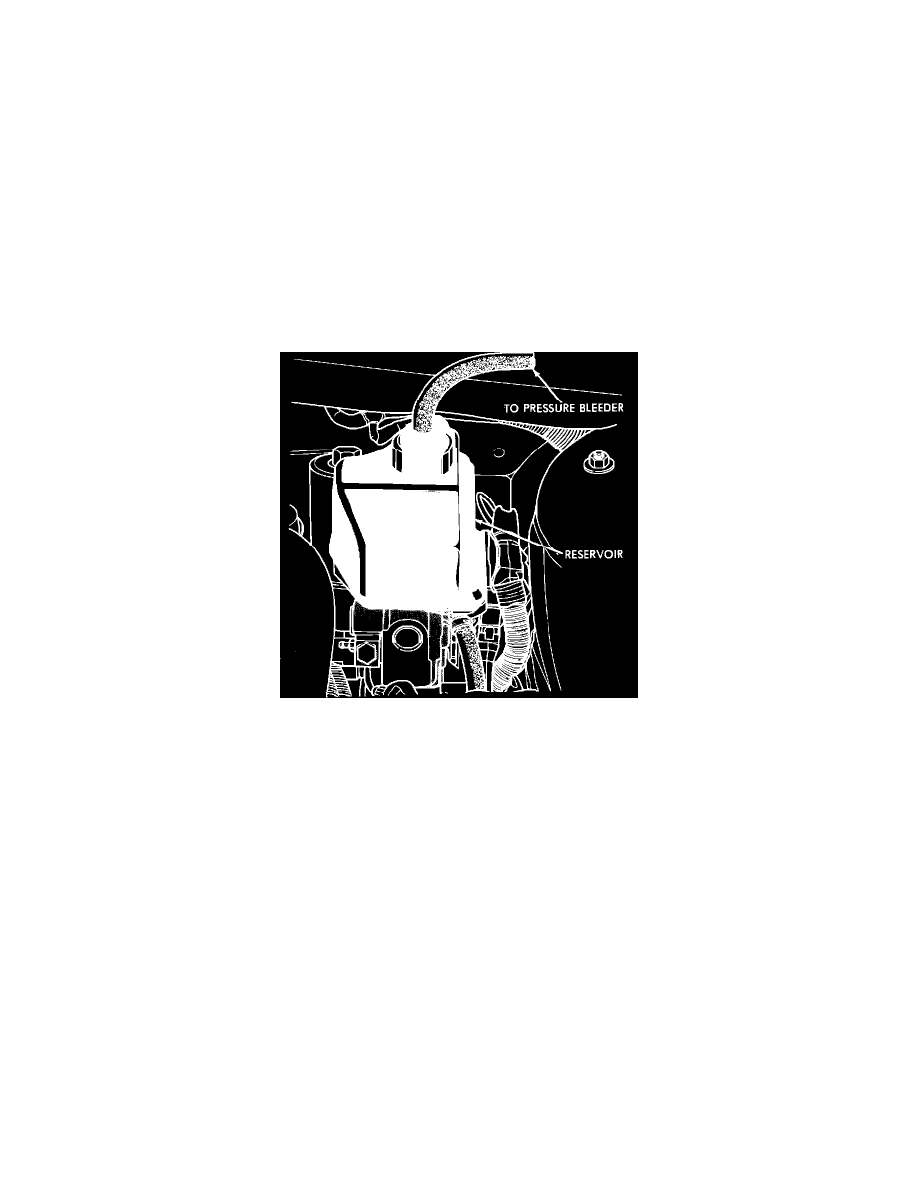Daytona L4-135 2.2L SOHC Turbo (1985)

Brake Bleeding: Service and Repair
Pressure Bleeding (Preferred Procedure)
The anti-lock brake system must be bled any time air is permitted to enter the hydraulic system, due to disconnection of brake lines or hose for service.
It is important to note that air in the hydraulic system will not cause a spongy pedal feel or additional pedal travel. The Bosch anti-lock brake system
monitors booster piston travel and booster pressure and may set a diagnostic trouble code, due to air in the brake system.
The brake lines may be pressure bled, using a standard diaphragm type pressure bleeder. Only diaphragm type pressure bleeding equipment should be
used to prevent air, moisture, and other contaminants from entering the system. The following procedure should be used for pressure bleeding of the
master cylinder and wheel circuits:
1. Ignition should be turned off and remain off throughout this procedure.
2. Depressurize the hydraulic accumulator by pumping the brake pedal a minimum of 25 times, as described in this section.
WARNING: Failure to depressurize hydraulic accumulator, prior to performing this operation, may result in personal injury and/or
damage to painted surfaces.
3. Remove electrical connector from fluid level sensor on reservoir cap and remove reservoir cap.
Fig. 46 - Pressure Bleeding
4. Install pressure bleeder adapter, as shown.
5. Attach bleeding equipment to bleeder adapter. Charge pressure bleeder to approximately 20 psi (138 kPa).
